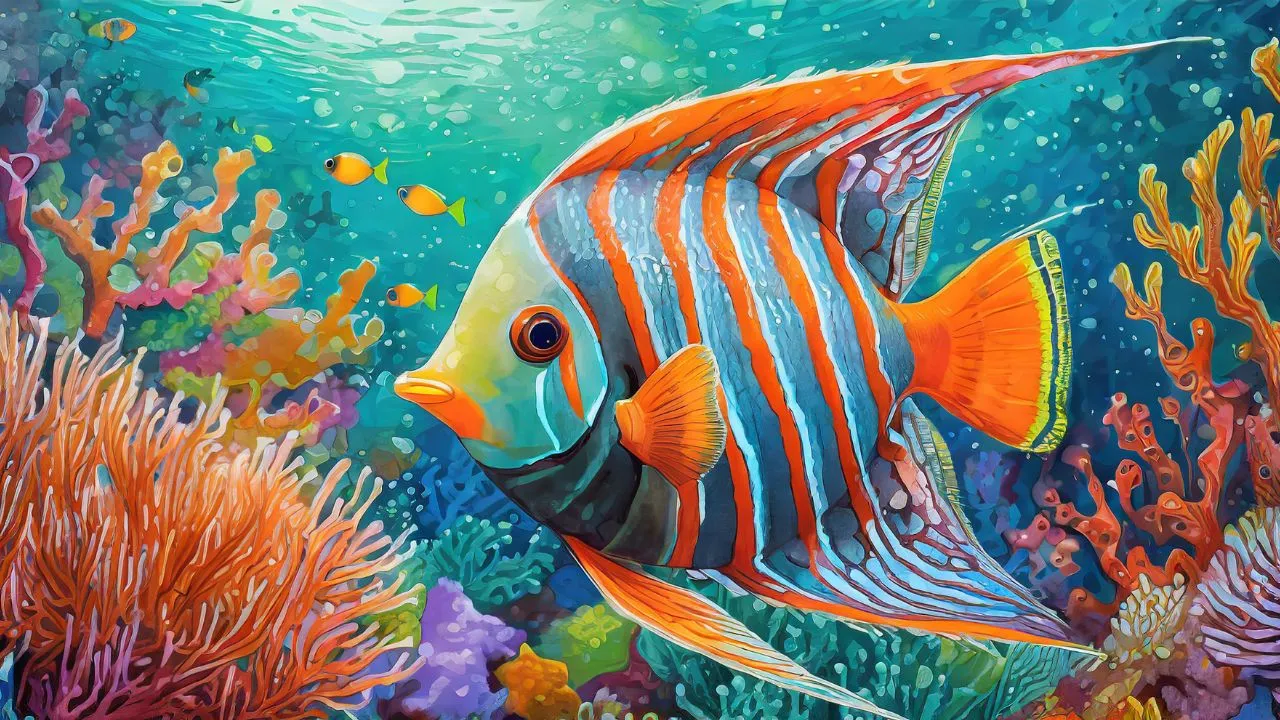When it comes the housing of angelfish, proper angelfish tank decoration plays a crucial role. It provides a visually appealing environment, and also contributes to the overall well-being and happiness of your angelfish. In this ultimate guide, we will explore the different aspects of angelfish tank decoration, from choosing the right substrate to selecting accessories and plants that complement your angelfish tanks.
Angelfish Natural Habitat.
Understanding where angelfish come from is the first step toward picking appropriate tank decorations. Angelfish are native to slow-moving freshwater streams, ponds, and flooded forests of the Amazon River basin in South America.
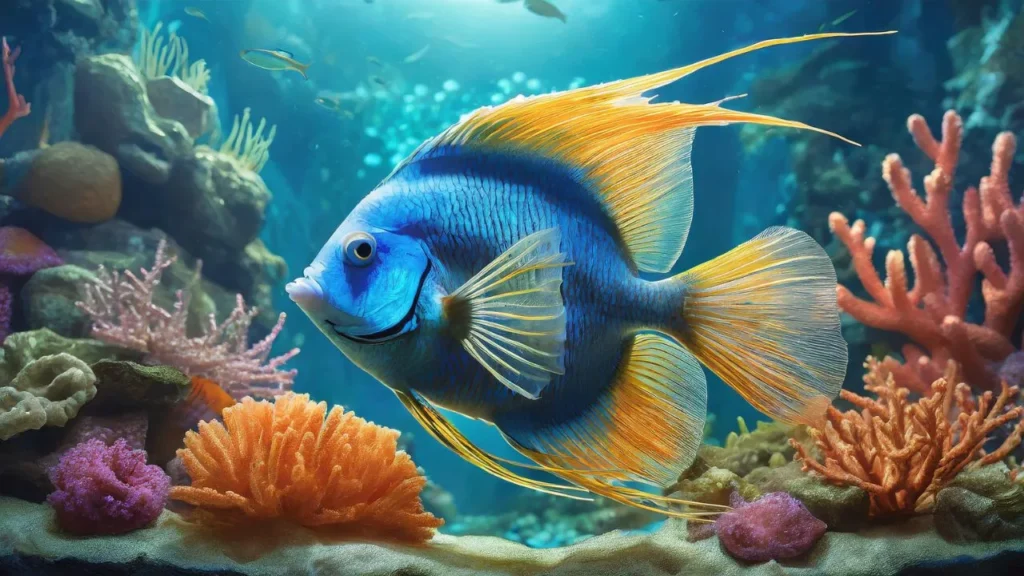
They inhabit densely vegetated areas and swim leisurely among submerged plants and fallen branches. Their elongated, laterally compressed bodies allow them to gracefully maneuver through thick vegetation with ease.
Recreating the heavily planted environment of their natural habitat in your aquarium is key to keeping angelfish thriving. This allows them to feel secure while displaying their full range of natural behaviors.
When decorating an angelfish tank, focus on adding lots of live plants as well as driftwood, rocks, and other decor that provides ample hiding spots. Making it resemble their native waters will bring out their vibrant colors and interactive personalities.
Importance of Proper Tank Decoration for Angelfish.
Proper tank decoration is essential for angelfish as it mimics their natural habitat and creates a sense of security and comfort. Angelfish are known to thrive in heavily planted tanks with plenty of hiding spots, as it allows them to exhibit their natural behaviors and reduces stress. By creating an environment that closely resembles their natural habitat, you can ensure the long-term health and happiness of your angelfish.
Aquarium Decor that Angelfish Like.
So what are the aquarium decor that angelfish like? When it comes to choosing aquarium decor for angelfish, it is important to consider their preferences. Angelfish are known to appreciate a variety of decor elements, including rocks, driftwood, and live plants. Rocks provide hiding spots and create a natural-looking environment, while driftwood adds a touch of authenticity and creates interesting focal points. Live plants not only enhance the aesthetics of the tank but also provide angelfish with places to explore and interact with.
Choosing the Best Substrate for Angelfish Tanks.
The choice of best substrate for angelfish is crucial when setting up tank. Angelfish prefer a soft substrate that mimics the sandy bottoms of their natural habitat. Fine-grained gravel is a popular choice as it allows for easy maintenance and provides a natural look. Avoid using sharp-edged gravel, as it can potentially harm the delicate fins of angelfish. Additionally, consider using a darker-colored substrate, as it helps to accentuate the vibrant colors of your angelfish. The following tips will help you in choosing the best substrates for angelfish.
What Type Of Gravel Do Angelfish Like?
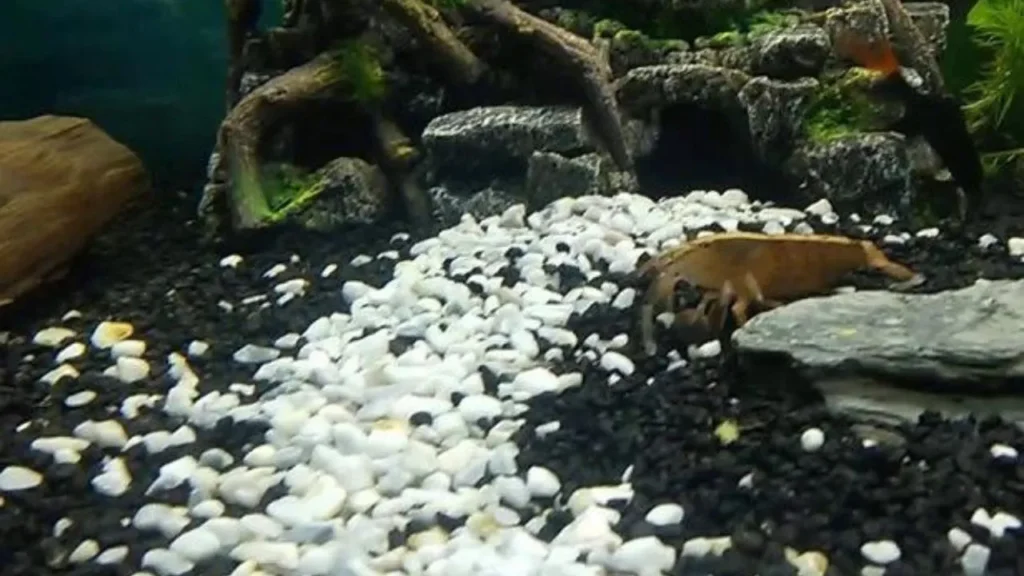
For angelfish tanks, a fine gravel is generally the best option.
A smooth, rounded gravel between 1-3mm in diameter works well. Larger gravel can damage angelfish during digging and may be too coarse for live plants to root well in. Extremely fine substrates like sand can compact, trap debris, and cause dangerous gas pockets if stirred up.
A neutral-colored gravel in shades of black, brown, tan, or natural tones looks most natural. Brighter colors can work too, but avoid glaring neon hues.
Aim for a gravel depth of 1-2 inches. This gives plants room for roots to spread while allowing angelfish to sift through the substrate looking for food.
For planted angelfish tanks, specialty aquarium plant substrates are ideal. These contain added nutrients to fuel plant growth. Popular options include Seachem Flourite, ADA Aqua Soil, Eco Complete, and CaribSea FloraMax.
Whichever gravel you choose, give it a good rinse before adding it to your tank. This removes any dust that could cloud your water. Then slope your gravel from around 2 inches in the back to 1 inch in the front for a natural look.
Gravel Depths For Angelfish Tanks.
Gravel depths play an important role in angelfish tanks. A depth of around 2-3 inches is ideal as it allows for easy cleaning and prevents debris from accumulating. Angelfish enjoy sifting through the substrate in search of food, and a deeper gravel bed can provide them with ample opportunities to exhibit this natural behavior. However, make sure to avoid excessively deep gravel beds, as they can impede water flow and lead to stagnant areas in the tank.
Using Air Stones in Angelfish Tanks: Do Angelfish Like Them?
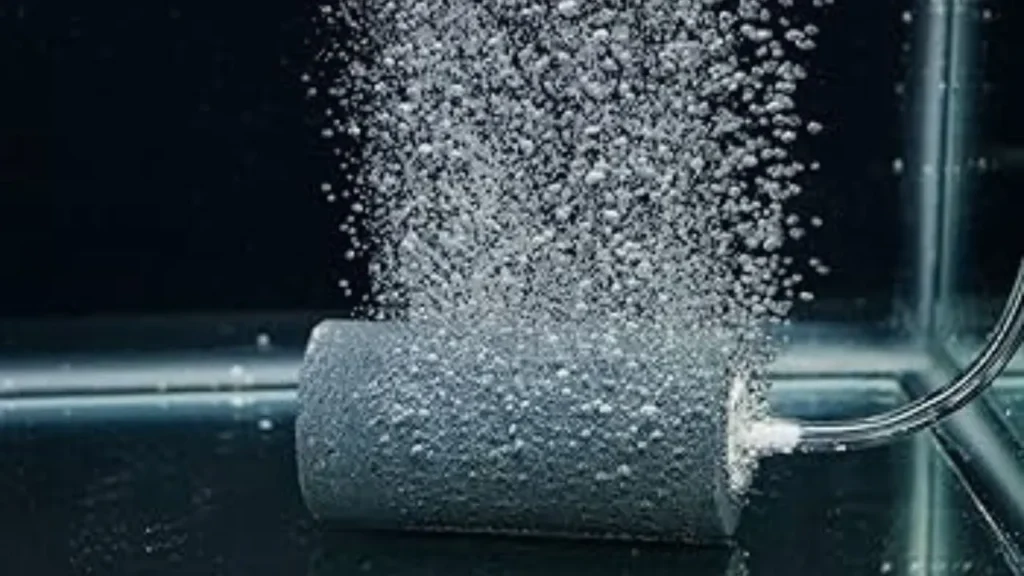
Air stones are commonly used in aquariums to enhance water circulation and increase oxygen levels. While some fish species appreciate the additional aeration, angelfish prefer moderate water movement. Excessive bubbling from air stones can create a turbulent environment, causing stress to your angelfish. If you choose to use air stones, ensure that the bubbles are not directly disturbing the surface of the water and causing excessive agitation.
Alternative Options: Using Sand Substrate for Angelfish Tanks.
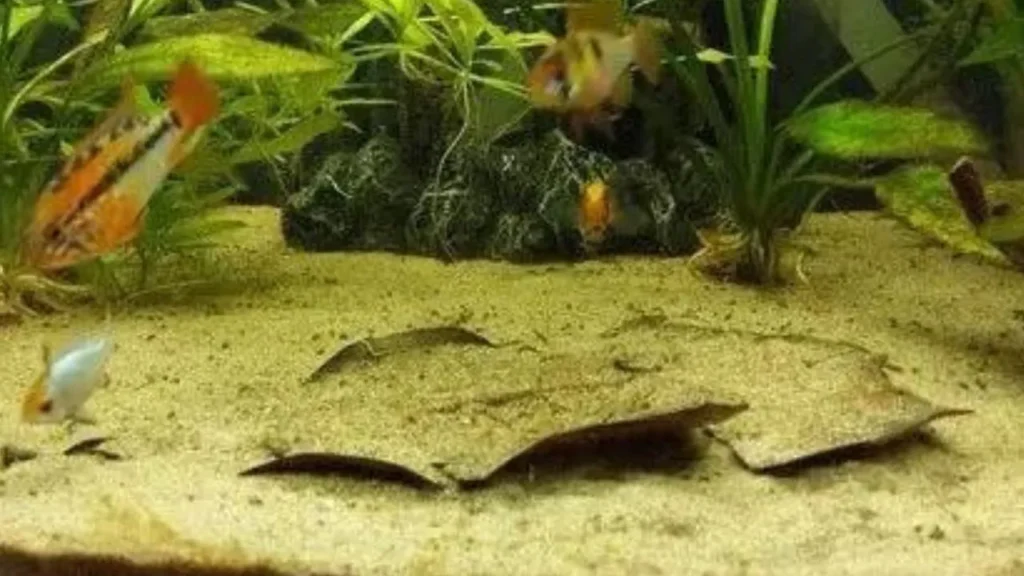
In addition to gravel, sand substrate is another viable option for angelfish tank decoration. Sand provides a soft and natural-looking substrate that mimics the sandy riverbeds where angelfish are often found. It allows for easy sifting and foraging behaviors while maintaining a clean and aesthetically pleasing appearance. When using sand, make sure to choose a fine-grained variety that is safe for angelfish and won’t cause abrasions.
Accessories and Plants that Complement Angelfish Tank Decor.
For a visually stunning angelfish tank decoration, consider adding accessories and plants that complement the natural beauty of your angelfish. Driftwood, rocks, and caves provide hiding spots and create interesting landscapes. Live plants such as Amazon swords, Java ferns, and Anubias not only add a splash of greenery but also provide shelter and breeding grounds for your angelfish. Make sure to research the compatibility of plants and accessories with angelfish to ensure a harmonious environment.
Best Live Plants for Angelfish Tanks.
Live aquarium plants are a must-have for angelfish tank decor. They naturally filter the water, provide security, and bring color and beauty to your tank.
Aim to have at least 50% plant coverage, with a variety of plant heights and textures. This gives angelfish plenty of swimming space while breaking up lines of sight to make them feel protected.
Some of the best plant choices include:
Amazon Swordplants (Echinodorus spp.) – These large-leaved beauties hail from angelfish native waters and make excellent centerpiece plants. Their broad leaves provide spawning sites.
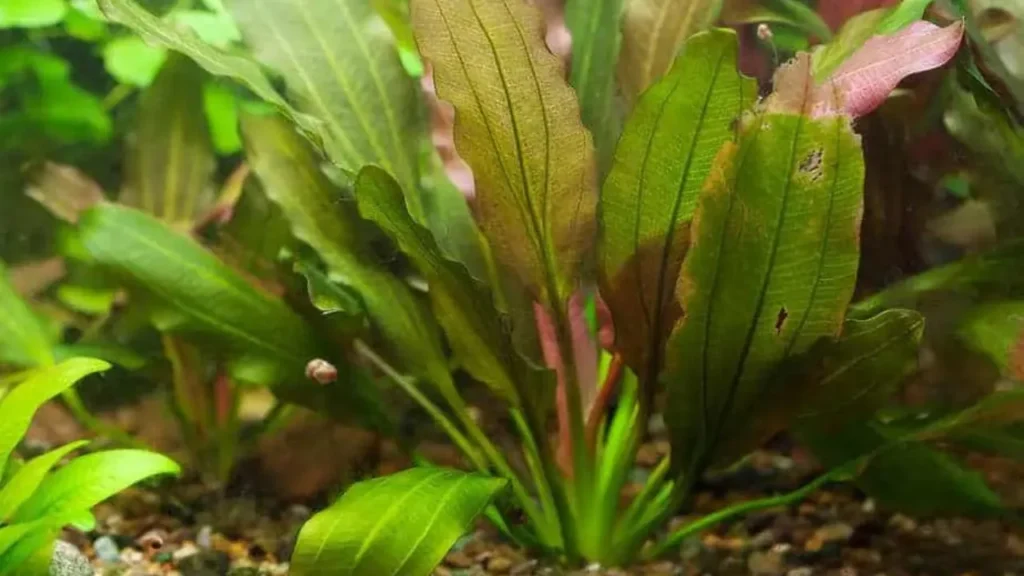
Java Fern (Microsorum pteropus) – A hardy, low-light plant that attaches to driftwood/rocks. Its wide leaves give good cover.
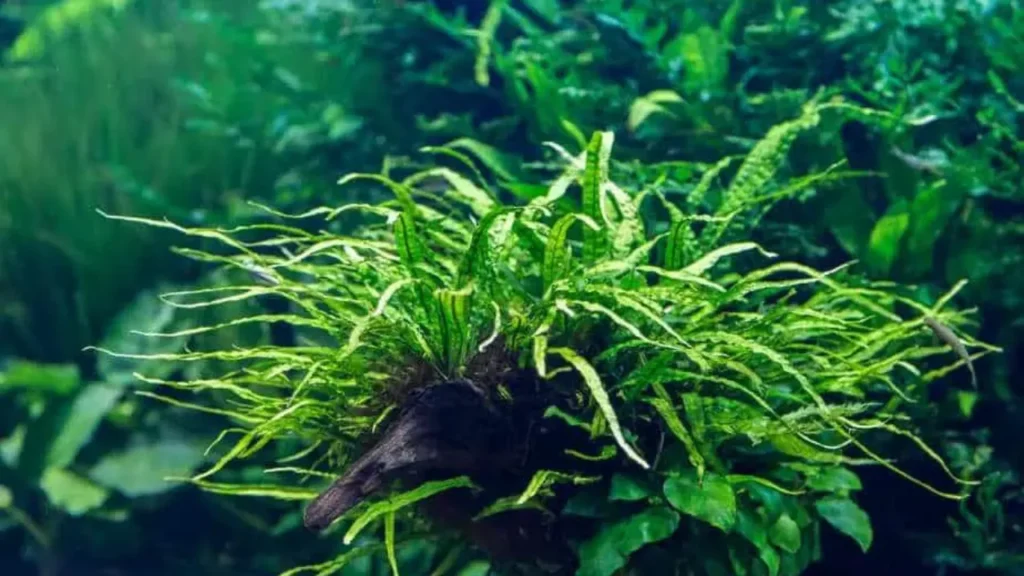
Anubias (Anubias spp.) – With broad, dark green leaves, anubias does well attached to decor. It grows slowly but adds great texture.
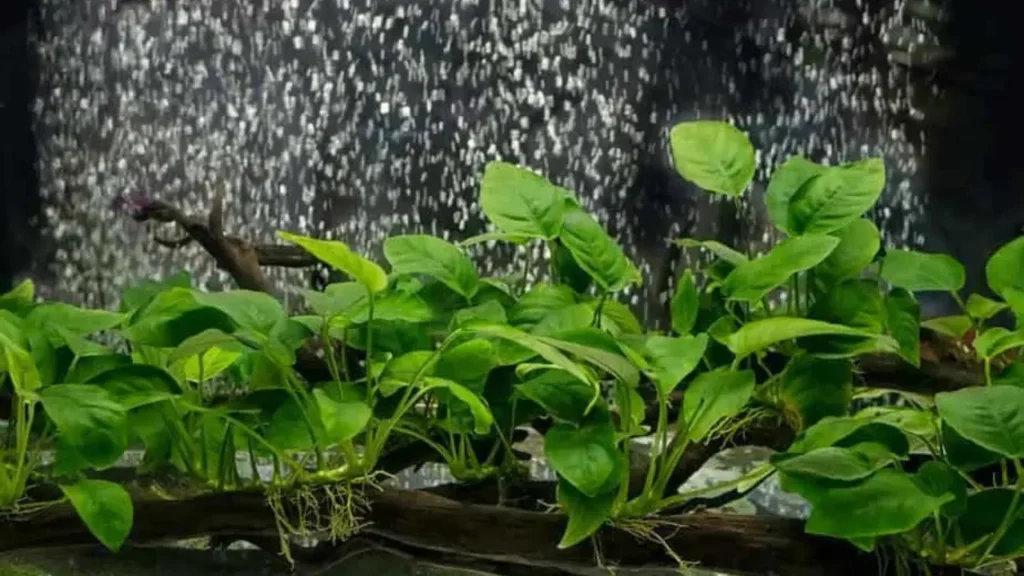
Cryptocorynes (Cryptocoryne spp.) – Crypts come in many varieties with different leaf shapes and sizes, adding nice diversity.
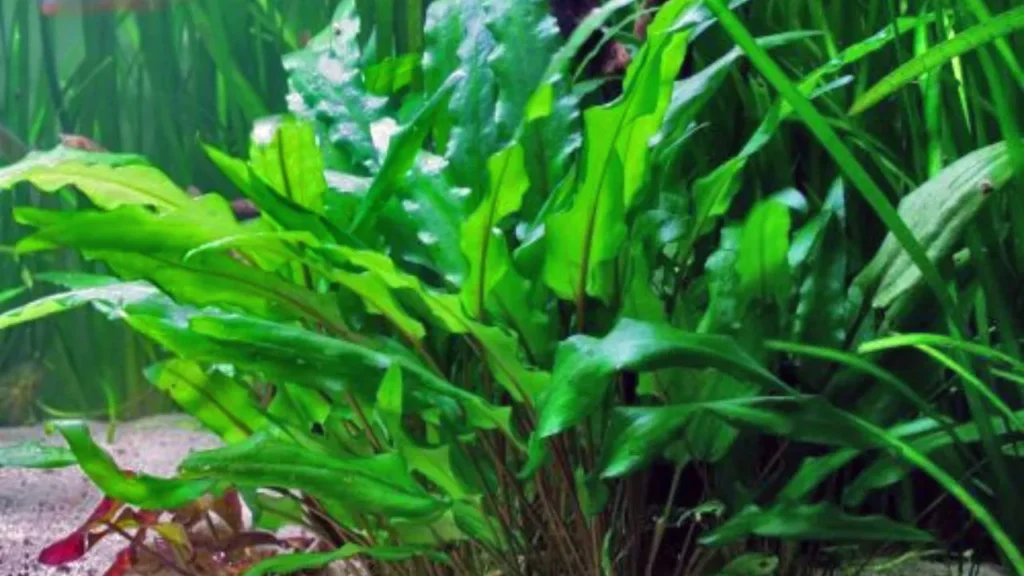
Java Moss (Taxiphyllum barbieri) – This versatile moss attaches to decor and provides superb fry shelter. It tolerates a wide range of conditions.
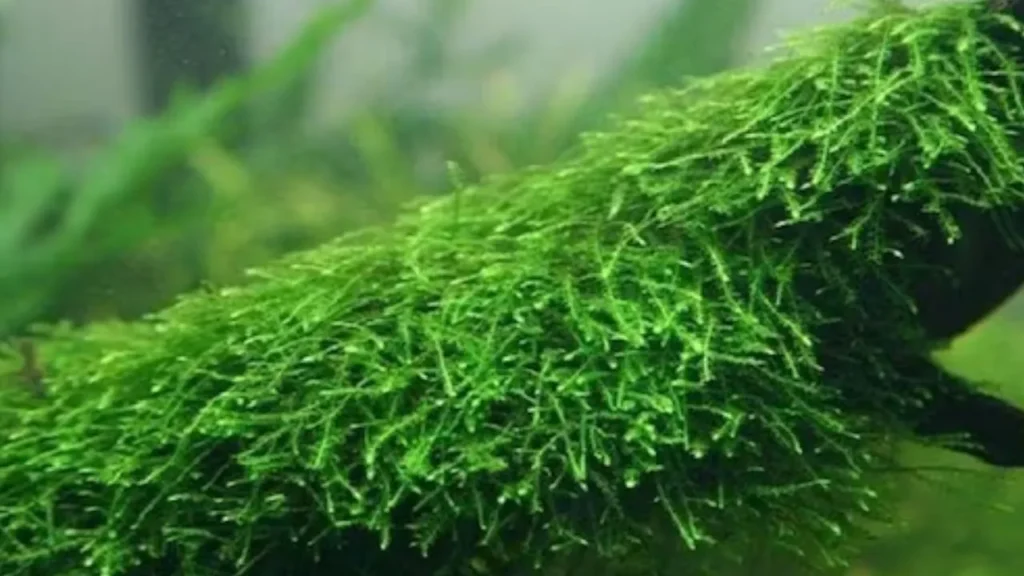
Water Wisteria (Hygrophila difformis) – Fast growing stems with finely divided leaves offer excellent hiding spots when planted densely.
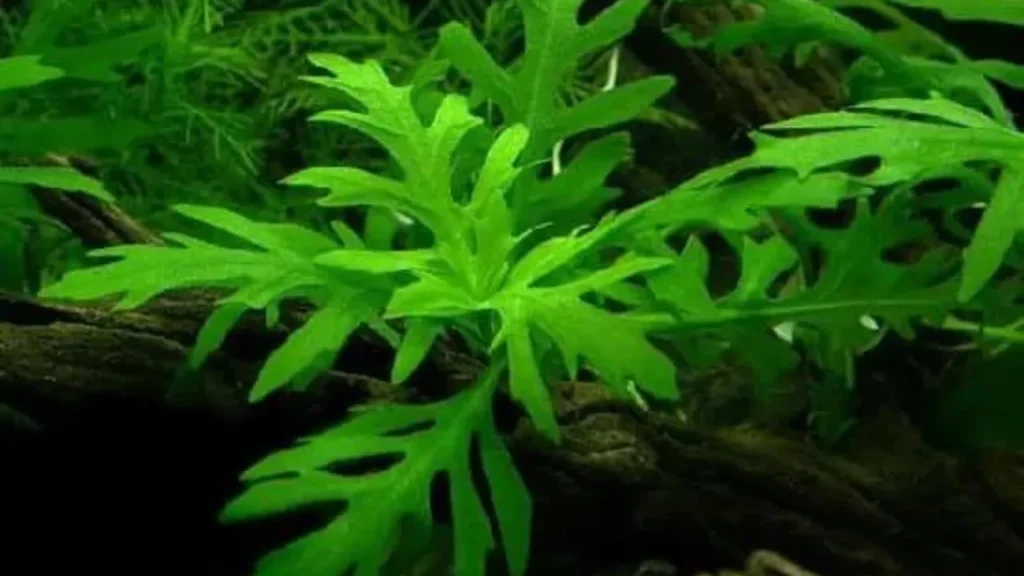
Be sure to include both foreground, midground, and background plants to create depth. Use tall stem plants, crypts, and swords in the back and sides, with lower-growing plants filling in the front.
Also Read: Best Aquarium Plants For Angelfish..
Popular Driftwood & Rocks for Angelfish Tanks.
Driftwood and rocks complement live plants beautifully in angelfish tanks. They add structural elements while providing more nooks and crannies for fish to explore and take cover in.
When selecting driftwood, look for pieces with intricate shapes that create little caves and overhangs for angelfish to swim through. Go for relatively smooth wood without sharp edges that could tear fins.
Darker colored woods like mopani and malaysian offer richer tones that stand out against green plants. Soaking the wood before adding it to your tank will help it sink.
Interesting rocks like slate, lava rock, dragon stone, and spiderwood also make excellent additions. Stack them to form caves and crevices. Place them strategically around plants to create a natural look with different heights and textures.
Be sure to thoroughly clean and boil any rocks or driftwood before placing them into your aquarium to remove debris, sap, and tannins.
Accessories and Decor Angelfish Love.
Beyond the basics, there are many fun aquarium decorations and accessories that can make your angelfish tank decoration more enjoyable for both you and your fish. Consider adding:
- Natural Caves – Angelfish love swimming through cave decorations. These make great hiding and spawning spots.
- Resin Ornaments – Decorative sunken ships, ruins, chests, etc. add visual interest and new dimensions for angelfish to explore.
- Aquarium Backgrounds – Backgrounds like river scenes or black create an illusion of depth while hiding equipment.
- Bubble Walls – Bubble wands or walls with air stones provide beneficial surface agitation and oxygenation.
- Floating Plants – Species like hornwort give shade and cover at the top where angelfish often swim.
- Indian Almond Leaves – These release beneficial tannins and mimic leaf litter in angelfish natural habitat.
- Dither Fish – Peaceful schooling fish like tetras provide movement and help angelfish feel secure.
Focus on decorations that offer holes, nooks, and plenty of plant-like hiding spots, as these make angelfish most comfortable. Avoid sharp objects or anything that could tear fins.
Choosing a theme like “Blackwater”, “Driftwood Oasis”, or “Flooded Amazon” can help guide your decoration choices while creating a cohesive look.
How to Arrange Decor in an Angelfish Tank.
With so many options, how do you arrange all the plants, rocks, wood, and accessories in your angelfish aquarium? Follow these tips for the best angelfish tank layout:
- Create a focal point – This draws the eye and anchors the scape. A large piece of driftwood or tall rock formation works well. Place it slightly off-center.
- Slope substrate deeper in back – Sloping from 2” in rear to 1” in front adds depth and natural look.
- Use tall plants in back – Plant Amazon swords, crypts and stem plants in the rear and sides to provide a lush backdrop.
- Arrange wood & rocks – Place decor around plants for a natural look, forming caves and overhangs.
- Add midground plants – Shorter crypts, anubias etc. fill in space between foreground and background.
- Include foreground plants – Low carpeting plants like dwarf sagittaria or marsilea complete the scape up front.
- Include open swimming areas – Leave some open spaces for angelfish to cruise and spread their fins.
- Use plants to break sightlines – Strategically place plants to obstruct long direct lines of sight across tank.
- Add finishing touches – Place Indian almond leaves, cones, accessories to enhance the biotope look.
Angelfish tank decor takes time. Start with the big elements like focal points, then fill in between to create a natural composition with different heights, textures, and colors.
Top Angelfish Tank Decor Ideas.
Now that you understand the key elements in aquarium decor that angelfish like, let’s look at some specific angelfish tank decoration ideas and themes to consider:
Amazon Biotope – This naturalistic scape mimics the angelfish native habitat. Use driftwood, leaf litter, java fern, anubias, swords, and blackwater extract. Add schooling tetra tankmates.
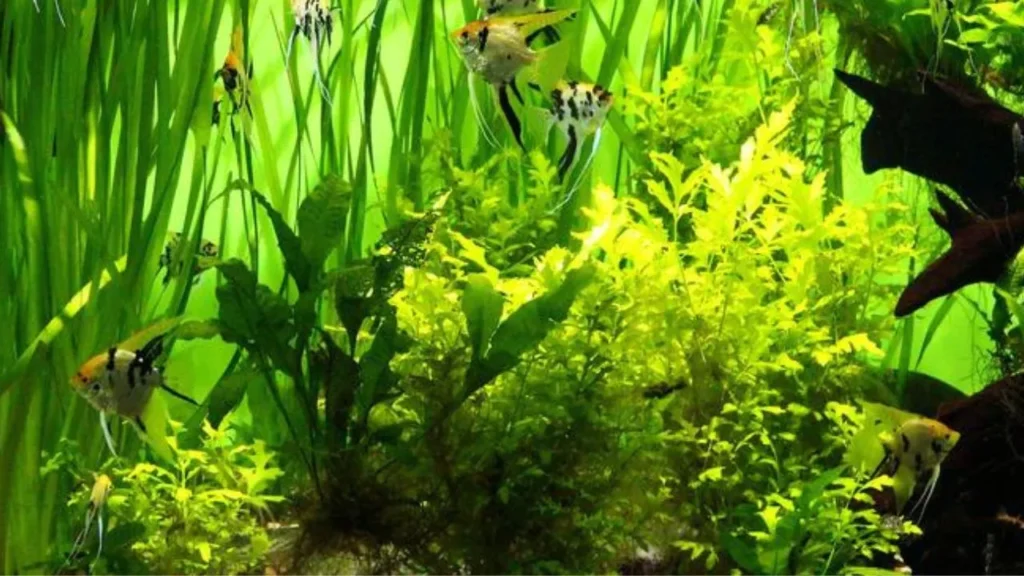
Floating Jungle – Let plants like hornwort, anacharis, and water sprite float at the top while swords and crypts anchor below to create a dense jungle effect.

Blackwater Tank – Tannin-rich water, driftwood, dim lighting, and floating plants recreate the mystical angelfish blackwater streams.
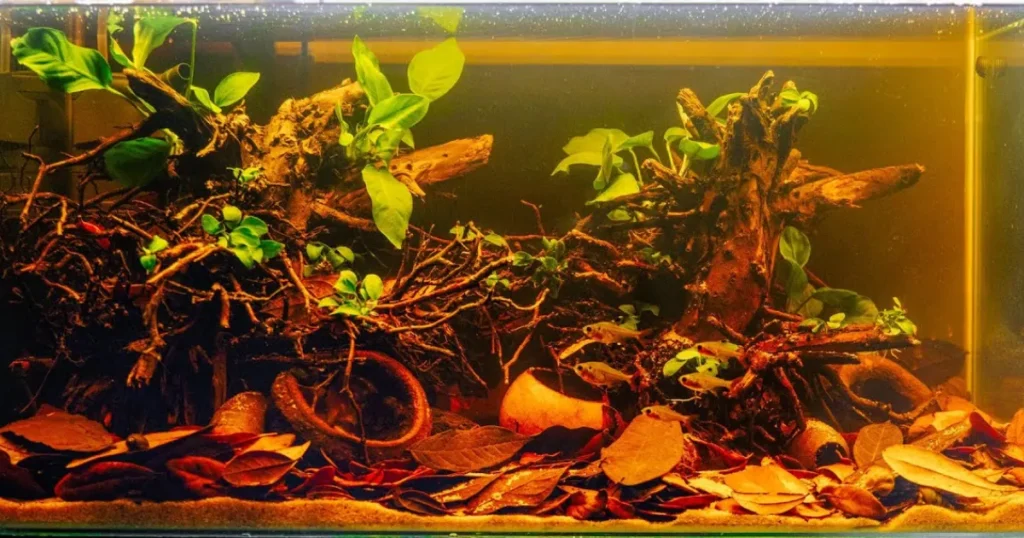
Complete guide to angelfish tank setup…
Maintenance Tips for Angelfish Tank Decoration.
Proper maintenance is vital to keep your angelfish tank decoration looking beautiful and to provide a healthy environment for your fish. Regularly clean the substrate by vacuuming any debris that accumulates. Trim and prune live plants to prevent overgrowth and maintain their health. Monitor water parameters such as temperature, pH, and ammonia levels to ensure optimal conditions for your angelfish. Lastly, perform regular water changes to maintain water quality and remove any excess nutrients that can lead to algae growth.
Also Read: Optimal Angelfish Tank Temperature..
Final Words.
In conclusion, angelfish tank decoration is an essential aspect of creating a stunning and harmonious environment for your angelfish. From choosing the best substrate for angelfish to selecting the perfect accessories and plants, every element plays a role in mimicking their natural habitat and ensuring their well-being. By following the tips and guidelines outlined in this ultimate guide, you can create a beautiful angelfish aquarium that will be the envy of every fish enthusiast. So go ahead, unleash your creativity, and create a captivating underwater world for your angelfish.

